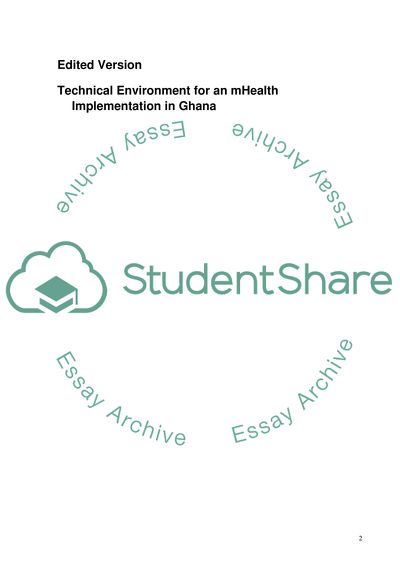Cite this document
(Technical Environment for an mHealth Implementation in Ghana Outline Example | Topics and Well Written Essays - 2750 words, n.d.)
Technical Environment for an mHealth Implementation in Ghana Outline Example | Topics and Well Written Essays - 2750 words. https://studentshare.org/technology/1755415-introduction-and-literature-review-of-technical-environment-for-mhealth-implementation
Technical Environment for an mHealth Implementation in Ghana Outline Example | Topics and Well Written Essays - 2750 words. https://studentshare.org/technology/1755415-introduction-and-literature-review-of-technical-environment-for-mhealth-implementation
(Technical Environment for an MHealth Implementation in Ghana Outline Example | Topics and Well Written Essays - 2750 Words)
Technical Environment for an MHealth Implementation in Ghana Outline Example | Topics and Well Written Essays - 2750 Words. https://studentshare.org/technology/1755415-introduction-and-literature-review-of-technical-environment-for-mhealth-implementation.
Technical Environment for an MHealth Implementation in Ghana Outline Example | Topics and Well Written Essays - 2750 Words. https://studentshare.org/technology/1755415-introduction-and-literature-review-of-technical-environment-for-mhealth-implementation.
“Technical Environment for an MHealth Implementation in Ghana Outline Example | Topics and Well Written Essays - 2750 Words”. https://studentshare.org/technology/1755415-introduction-and-literature-review-of-technical-environment-for-mhealth-implementation.


